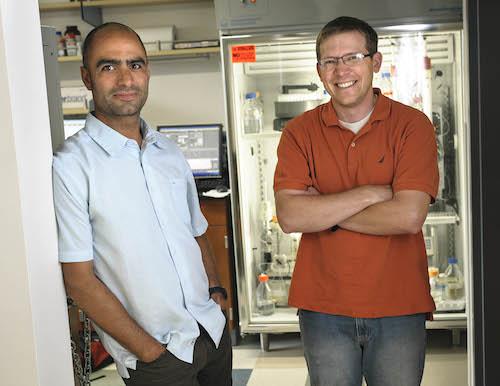 Evolution
Evolution
 Intelligent Design
Intelligent Design
Researchers Suggest Molecular Machine Is Irreducibly Complex

A new paper in Science, “Crystal structure of the CRISPR RNA-guided surveillance complex from Escherichia coli,” discusses the structure of a molecular machine, “Cascade” (CRISPR-associated complex for antiviral defense), used in bacteria as part of their adaptive immune system. The paper describes the complex mechanism of assembly as well, but what’s particularly noteworthy is this comment from an article at Science Daily about the paper:
“The structure of this biological machine is conceptually similar to an engineer’s blueprint, and it explains how each of the parts in this complex assemble into a functional complex that efficiently identifies viral DNA when it enters the cell,” [researcher Blake] Wiedenheft [at Montana State University] said. “This surveillance machine consists of 12 different parts and each part of the machine has a distinct job. If we’re missing one part of the machine, it doesn’t work.” (Emphasis added.)
That’s basically the definition of irreducible complexity right there: all parts are required for it to function. So how did this complex molecular machine evolve? Of course no explanation is given — we only get the standard superfluous nod to evolution:
“Bacteria have evolved sophisticated immune systems to fend off viruses. We now have a precise molecular blueprint of a surveillance machine that is critical for viral defense,” Wiedenheft said.
In another superfluous reference to evolution, they note that this machine might inspire medical therapies:
“In nature, these immune systems evolved to protect bacteria from viruses, but we are now repurposing these systems to cut viral DNA out of human cells infected with HIV. You can think of this as a form of DNA surgery. Therapies that were unimaginable may be possible in the future,” Wiedenheft said.
They believe these systems “evolved,” as if that explained it, but the substance of everything else they say points to intelligent design.
Photo: Blake Wiedenheft (l.) and Ryan Jackson (r.)/Montana State University.
